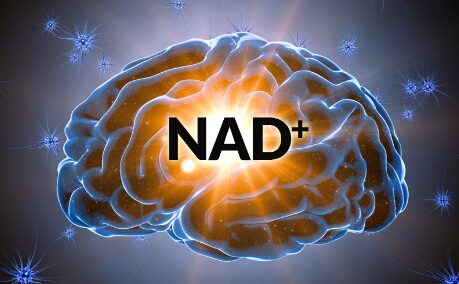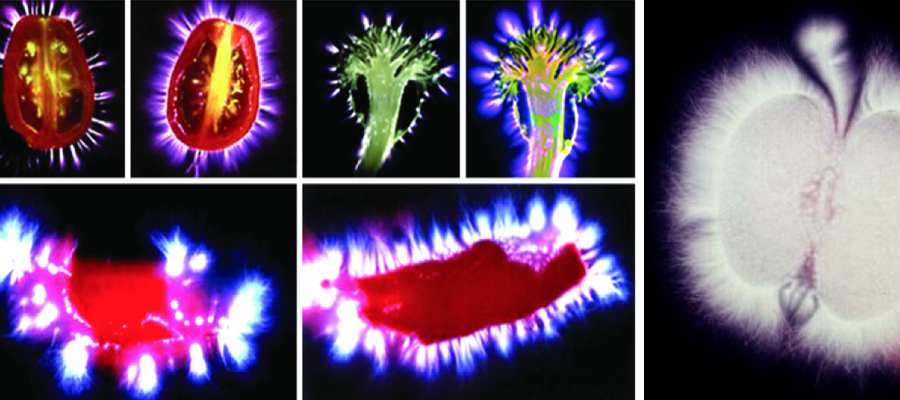
NAD Deficiency Link To Alcoholism & Other Opiate Addictions
Genita M. Mason’s Medical Model, Book, & Alcohol Addiction Science Endorsed By Dr. Abram Hoffer M.D., PhD
Genita M. Mason H.H.P., N.C.
Medical Director, The NAD Therapy Center For Addiction at The Biosanctuary
Author, Alcoholism: The Cause & The Cure – A Biological Medicine Approach
Following is the Foreword by Dr. Abram Hoffer M.D., PhD
Niacin (B3) coenzymes NAD and NADP play a critical role in producing enzyme reactions. It is necessary for the mitochondria, the energy production organelle. The mitochondria, when fed correctly, provides the energy for each and every cell in your body. It aids to execute its biologically assigned duties for the overall health of every aspect of your existence!
It is common knowledge that low cell transmembrane voltage causes disease – particularly cancer. But an unrecognized long list of metabolic disorders, including addiction have a direct link to low cell energy and most of the time are suffered for long periods of time before actual disease sets in and obvious symptoms develop. The transmembrane cell voltage of all but heart cells is -70mv millivolts. The heart cells operate at -120 millivolts. This is why heart cancer is extremely rare, the Mayo clinic reports an average of one a year!
By keeping up transmembrane voltage, it becomes possible to keep the oxidative stress at minimum and healthy bioenergetics (cellular functions) at right level. However, those with NAD Deficiency don’t have this luxury and need help. Oxidative stress plays a primary role in the development of “Addictive Biochemistry.” It is the progression of suboptimal neurotransmitter synthesis and distribution to actual symptoms this group will find alcohol or their drug of choice to mediate.
About NAD Deficiency
Cell lipid membranes (phospholipids) that insulate cells from over-firing (over-stimulating, sympathetic nervous system dominance) experience damage due to oxidative stressor neurotoxins. Some examples include pesticides (glyphosate), chemicals in tap water, and a long list of other environmental, medical, and food toxins. We simply overlook or don’t take them seriously today. But for those with NAD deficiency, this suboptimal biochemistry that suffers more from oxidative stress than those with sufficient NAD levels creates a condition I call “Addictive Biochemistry.” It is because it causes the onset of symptoms (usually, early in one’s life) associated with this neuro and biochemistry.
Besides, alcohol is the perfect elixir to quiet the “storm.” It helps to calm the excited and starved NAD receptors which translate to worry, anxiety, fear, over-excitability, insomnia, increased perception of stress. The stress can be due to psychological, physical or emotional factors. Also, it is common to become overwhelmed, and feeling depression easily.
NAD Deficiency in Children and Young Adults
Children and young adults with NAD deficiency also tend to be the sensitive ones, have a hard time at school for this reason and migrate toward isolation to keep their environment less stimulating. One characteristic of this condition that Mt. Sinai School of Medicine found over 20 years ago, that children who crave sugar and eat a lot of it are far more prone to alcoholism. This makes perfect sense because sugar metabolism taxes NAD stores and in turn, low blood sugar cycles initiate the predator response (discussed below) and create symptoms they will seek to alleviate. The identical biochemical connection between sugar and alcohol is there and has its documentation in Alcoholism: The Cause & The Cure.
Another aspect of alcohol addiction and NAD Deficiency (NADD) is that NADD causes over-expression of the NMDA receptor and initiates the “predator response” causing the need in the animal to exert itself in the hunt of prey or protect itself from being preyed upon (fear). Endorphins are synthesized to satisfy NAD receptors to reduce fatigue and pain (many regular drinkers ‘wake-up’ when they begin to drink which usually leads to a night of it.
However, the endorphins hitting the NAD receptors is short term because evolutionary biology makes the system think the it will get niacin soon from the food to replenish NAD which also shuts off the predator response. Unfortunately, as niacin and NAD is very sufficiently replenished, the individual assumes a lifestyle of constant seeking of NAD and when once can’t get enough from healthy sources such as food, they go for the easily accessible solution, beta-endorphins which alcohol produces as well as the GABA to calm them and the serotonin that makes them think everything is okay again.
Appropriate NAD Levels for Drinkers
Healthy NAD levels also enable the moderate drinker to quickly metabolize alcohol instead of it being allowed to build in the system causing acute toxicity and drunkenness. In fact, many medical facilities have used nicotinic acid to relieve acute intoxication because the niacin will produce NAD and the NAD will metabolize the alcohol in the system more efficiently.
One very common characteristic of most moderate drinkers is that they don’t become energized after a couple of drinks like those who suffer NADD, they instead become sleepy. This is because they have sufficient NAD to metabolize alcohol quickly which will make one tired and since the NAD levels don’t go to low with health NAD levels, the predator response is prevented.
It is these studied, clinically experienced, evidence-based biological science facts played out in all aspects of research, clinical trials and NAD IV infusion treatment methodologies that establish the justification of NAD+ IV Therapy as a indispensable treatment for actually reversing and correcting the condition known to create addictive biochemistry. People who undergo this treatment do not suffer cravings and are able to free themselves from the “addict” identity. They no longer have an addiction.
Quickly achieving healthy levels of NAD with NAD+ IV infusions, then maintaining those levels via a diet and lifestyle that avoids toxic overload and a multi-tiered oral organic oral supplementation program which helps to relieve oxidative stress and continue to provide the raw materials for NAD synthesis is a near full proof approach to actually curing the addiction to alcohol.
What I have analyzed in my practice?
In my practice I include in all NAD+ treatments hyperbaric oxygen chamber, PEMF (Pulse Electromagnetic Frequency Therapy), Infrared Sauna w/ Medical Oxygen Mask, EWOT (Exercise with Oxygen Therapy) and an all organic diet and juices while in treatment. These adjuvant therapies enable my clients to experience the medical / treatment value of never before achieved sustainable results in more efficient function of all intra-cellular mechanics via stronger NAD potency within the cell and a superior increase in actual numbers and efficiency of mitochondria and stem cell function. In doing this, most importantly, the once alcohol addicted individual not only enjoys the freedom from alcohol addiction but he/she has greater chances of living a longer life to enjoy their new found health.
Near closing, replenishing and maintaining healthy NAD levels corrects impaired cellular energy production associated with suboptimal brain chemistry and the adverse neurochemical changes which create addictive biochemistry.
In my next blog, I will explain the very important relationship between NAD and NMDA receptors and how understanding their relationship helps to build addiction-proof oral supplementation programs to maintain healthy levels of NAD and to not only enjoy the resolution of symptoms people seek relief in alcohol for but also the many quality of life enhancing benefits of energy, good sleep, focus, peace and calm.
Keep in mind, that while I have focused on alcohol addiction, these biochemical chain of events I’ve described hold true for all opiate addictions.
Genita M. Mason
Author,
Alcoholism: The Cause & The Cure – A Biological Medicine Approach


